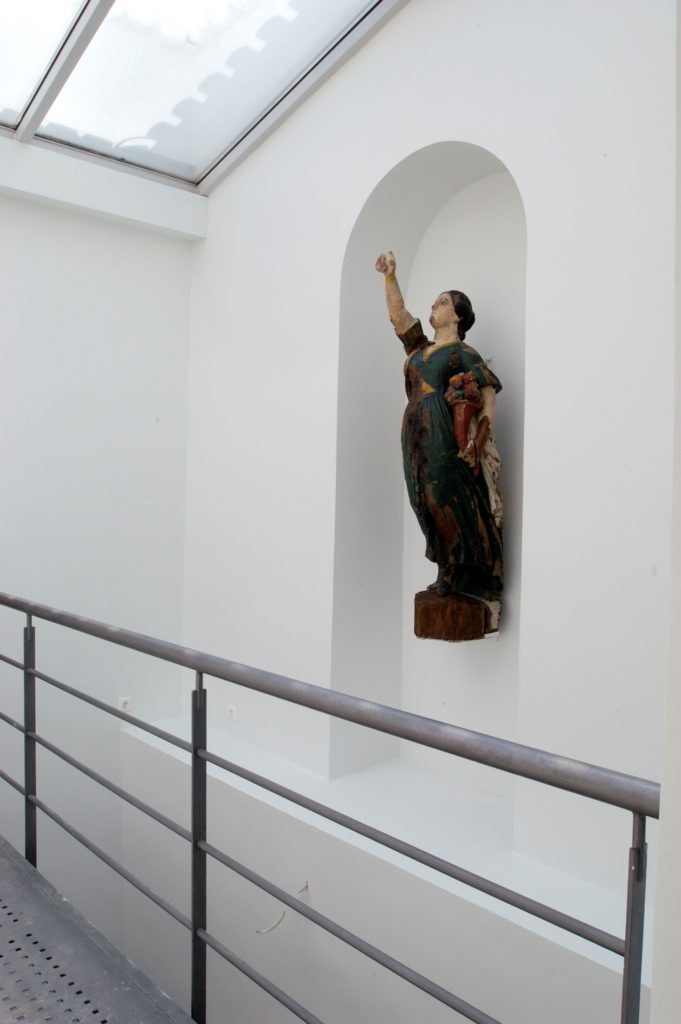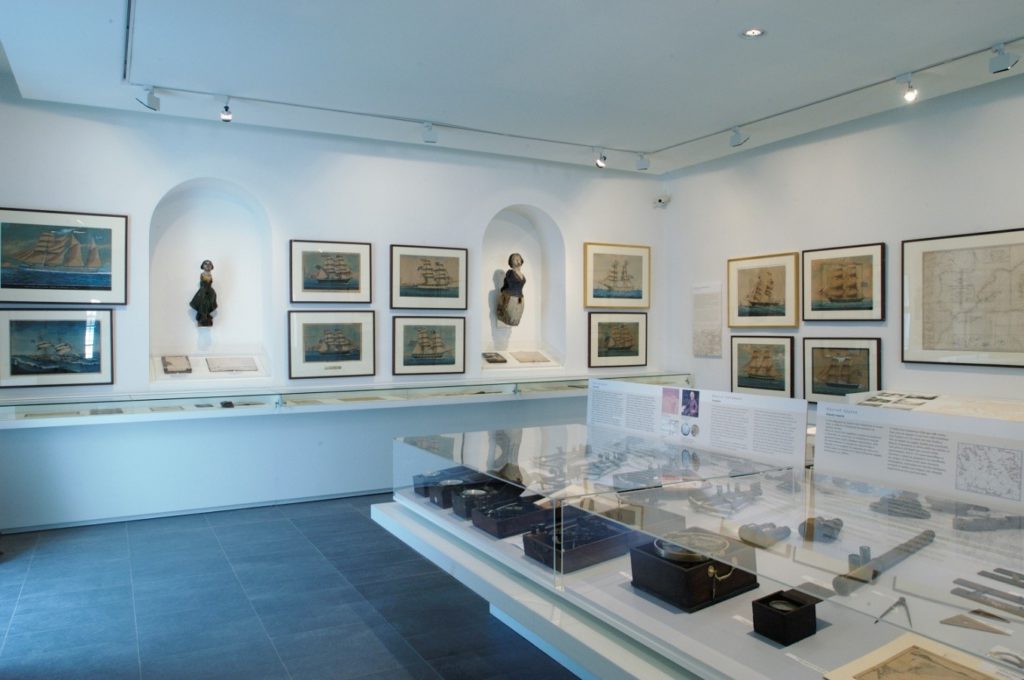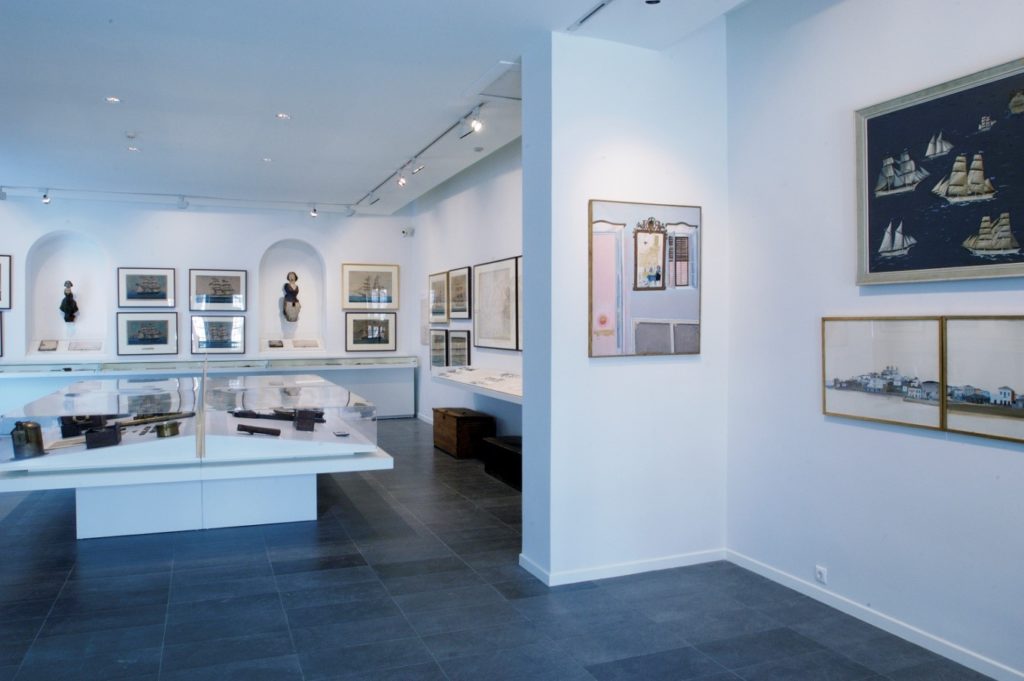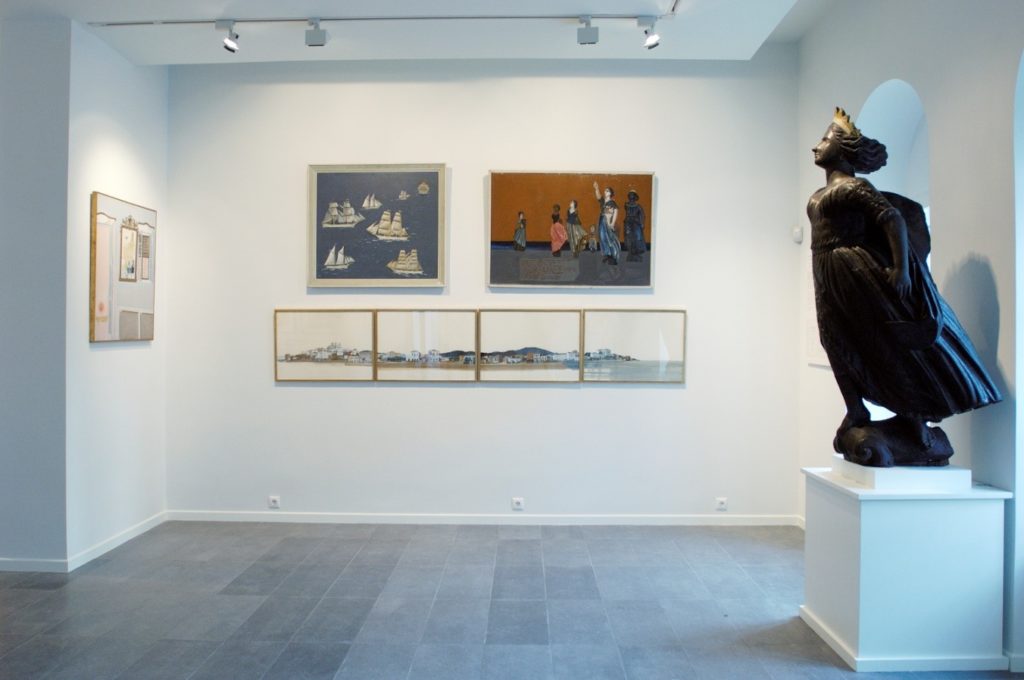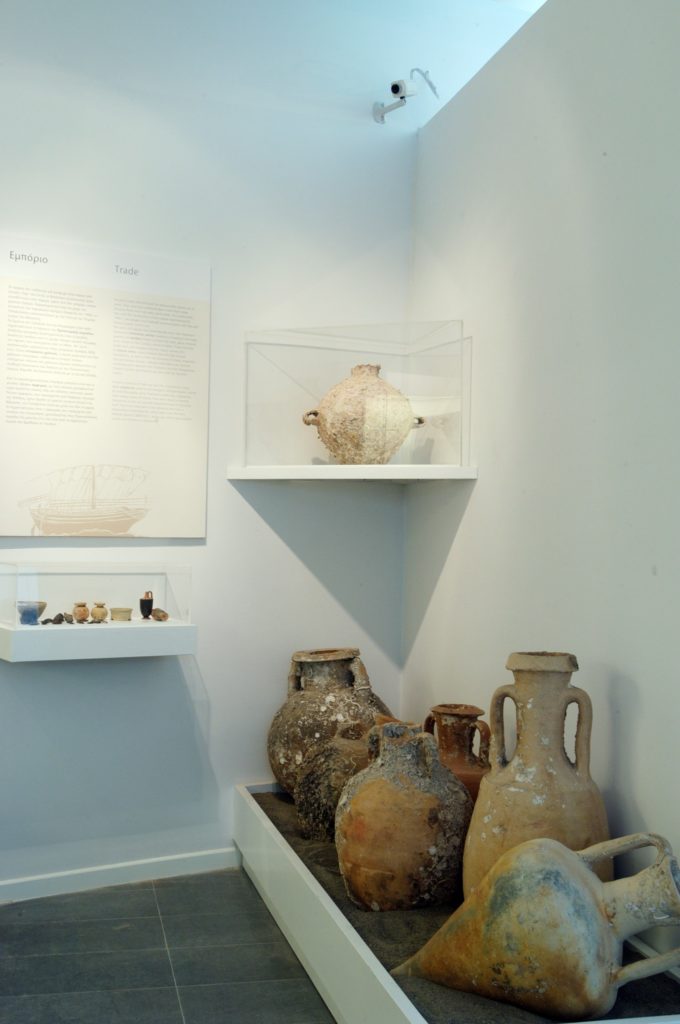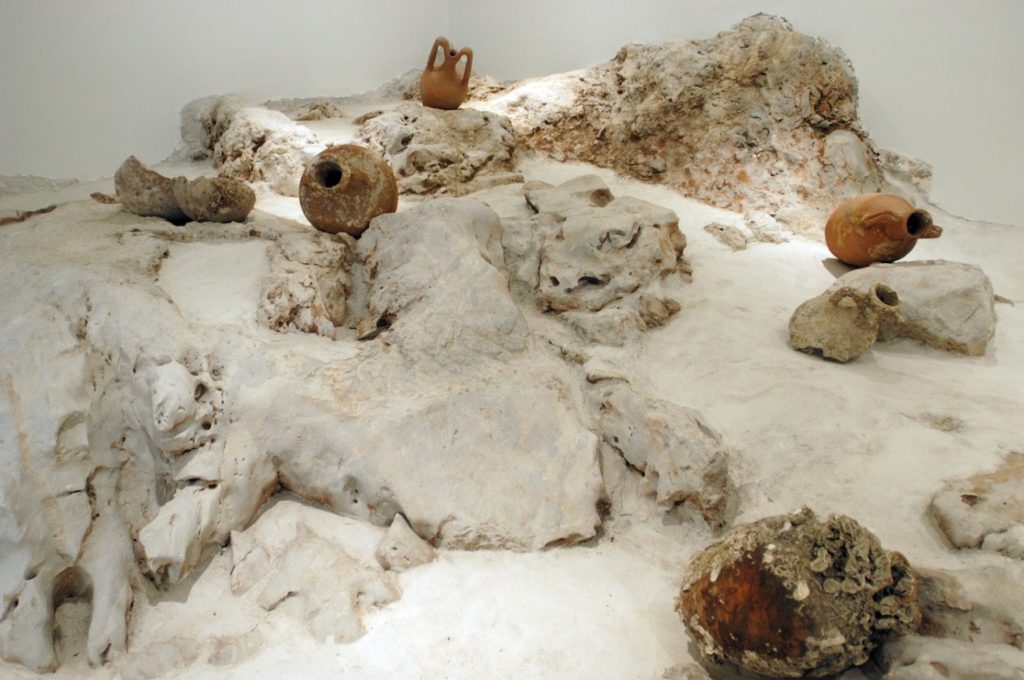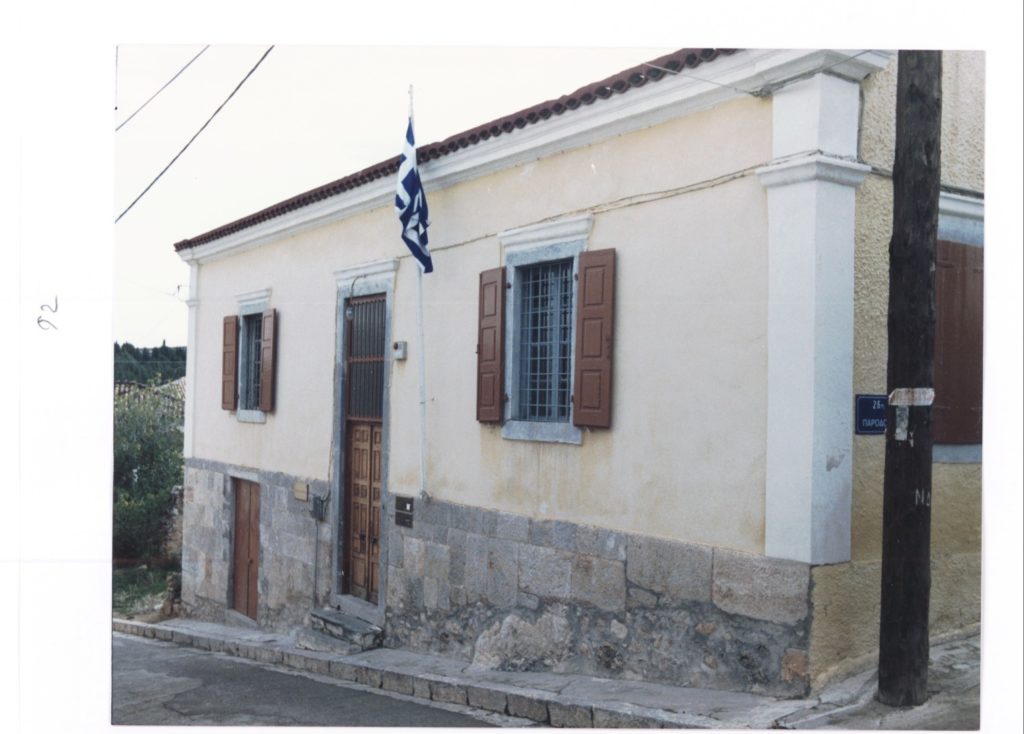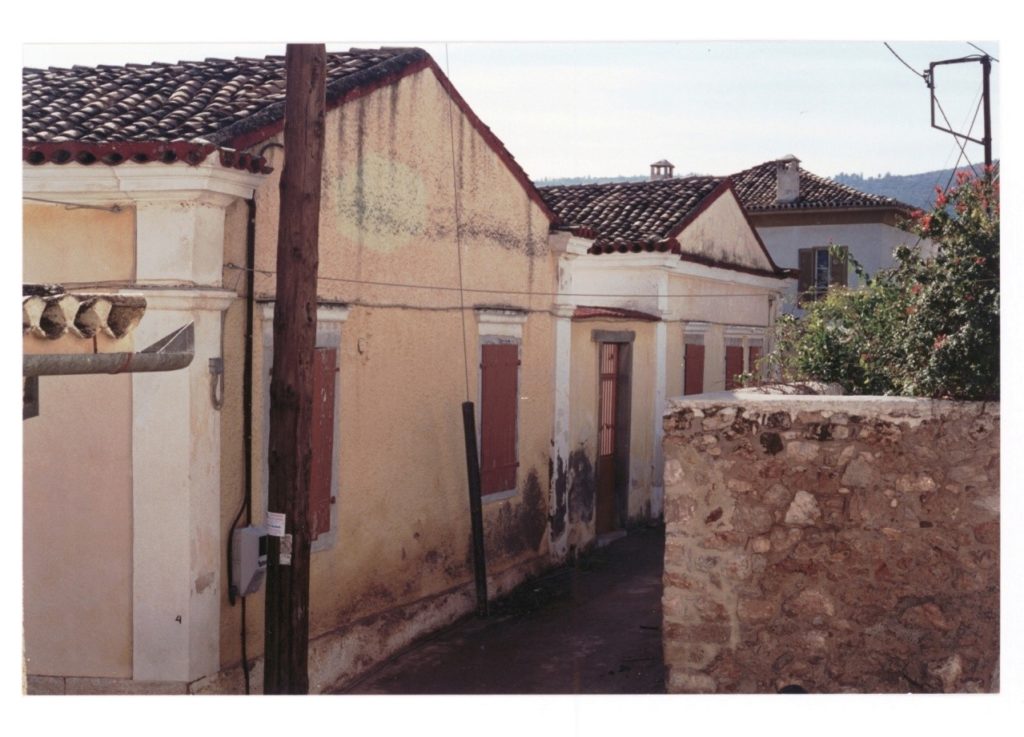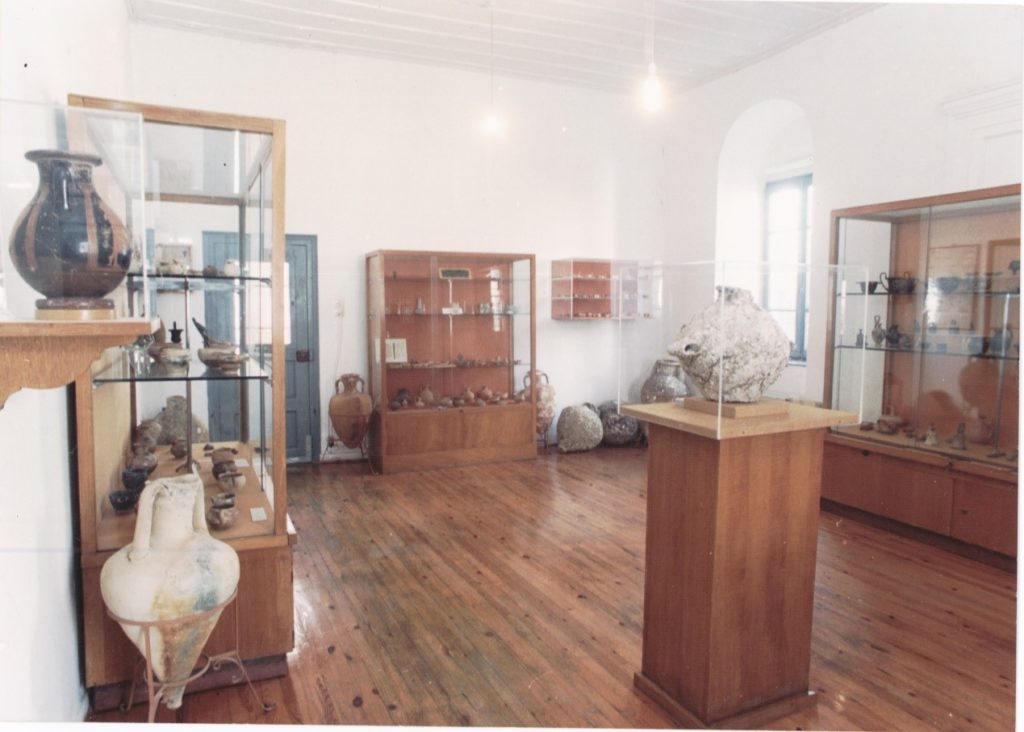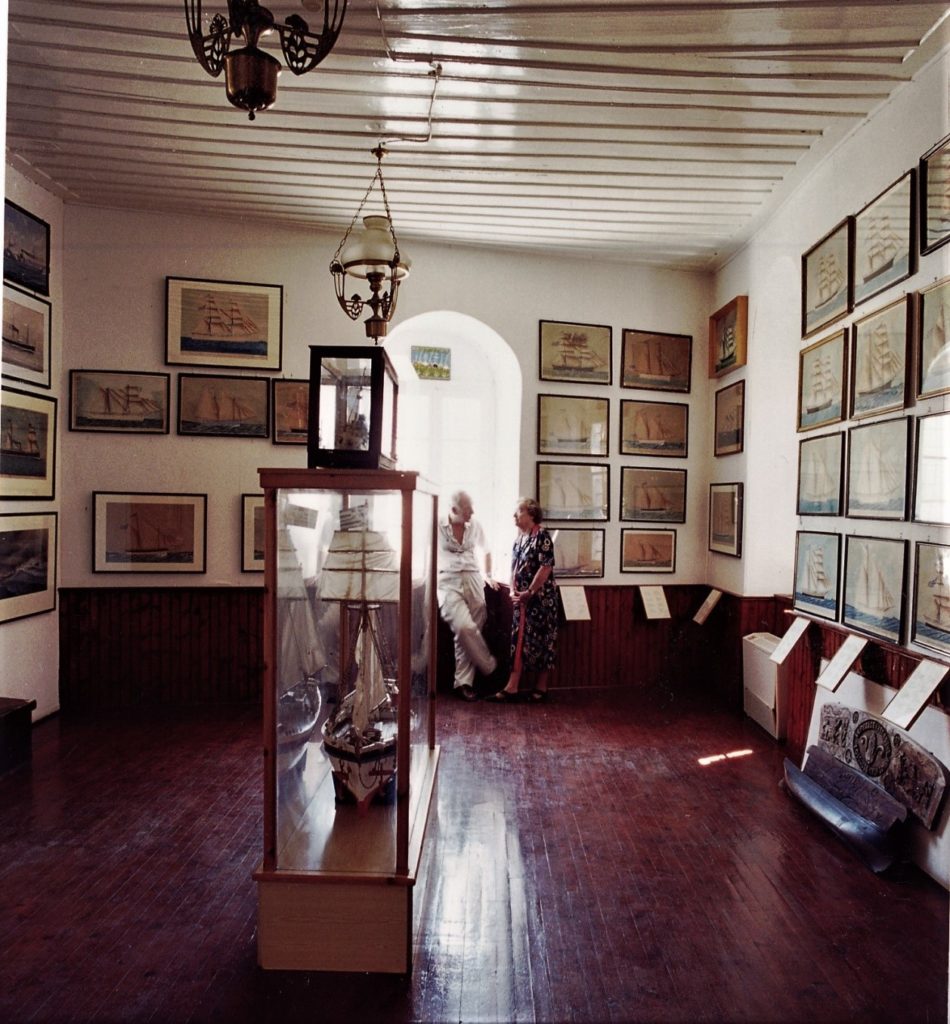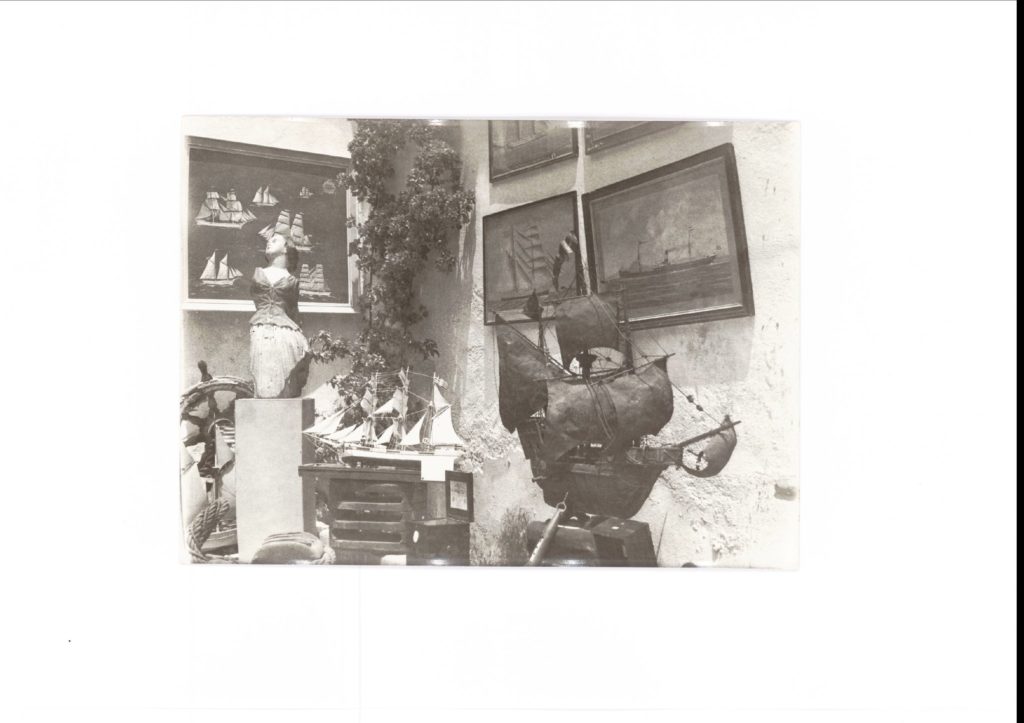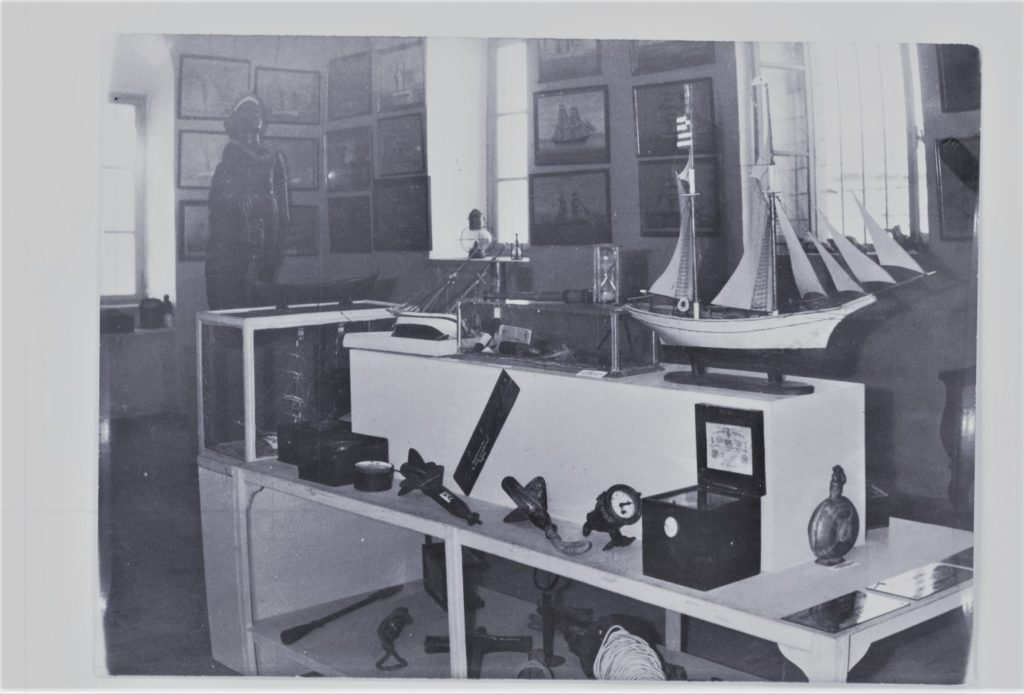The Nautical and Historical Museum of Galaxidi, the pride of the place, illustrates the life and maritime achievements of its inhabitants for five millennia, from the prehistoric period to the beginning of the twentieth century as a custodian of the collective memory of the region.
It is the oldest Maritime Museum of Greece with the richest collection of Paintings of Greek Sailboats.
It was founded by the doctor and Mayor Efthymios Vlamis in 1928 who collected the paintings from the houses of the Galaxidiotes, and collection was frther enriched with other donations. As Eva Vlami says in her book about Galaxidi: "The people of Galaxidi took the pictures of the ships from their homes, took out old memorabilia from the chests and handed them over to their Mayor, it was a good not only for Galaxidi but for the whole Greece to hand over every relic of old nobility to the Municipality".
It houses the unique historical manuscript "The Chronicle of Galaxidi" that the historian, K. N. Sathas, discovered in 1864 in the ruins of the Byzantine Monastery of Sotira. It also contains an important archaeological collection that was first created in 1932 from the offers of the "Union of Young Galaxidians", on the initiative of Is. Sidiropoulos and other Galaxidians and from the findings of the Threpsiadis excavation and other surface investigations and testifies to the continuous habitation of the place for many millennia.
The exhibits
- Archaeological collection from the ancient settlement and the surrounding areas. The exhibits concern public, private life, worship, maritime trade, the burial customs of the ancient inhabitants of the city of Chaleion (today's Galaxidi) and a small but important coin collection.
- The manuscript "Chronicle of Galaxidi" is one of the most important post-Byzantine texts of Greek historiography, covering the period from the 10rd to the 18rd century. It narrates the adventures of the sea state that is constantly being destroyed and reborn.
- Weapons of the era and other relics from participation in the revolution of 1821 on land and at sea.
- Exhibits on the renaissance of the maritime state after 1830 and its commercial heyday. The art of shipbuilding and the merchant fleet of sails, details of the construction of the wooden ship and its rigging. The type and names of sails and the various types of sailboats.
- Works by painters of foreign ports who produced the excellent paintings of ships as well as those of Greek painters.
- Carved female figures, the beautiful prows of Greek ships.
- One of the greatest collections of navigational instruments: octants, sextants, chronometers, odometers and other instruments used by skilled mariners before the age of radar and satellites.
- A collection of documents and ship logbooks that are testimonies to the adventure of the 19th century commercial sea voyage,The commercial ports that visited and the cargoes but also the first attempts to organize mutual insurance organizations.
- A small gallery with six beautiful paintings by Galaxidiotis painter Spyros Vassiliou.
- A rare and rich collection of stamps on mainly nautical subjects with the title "Argonaut", donated by Konstantinos Anitsas.
Brief History of the Museum
- Founded in 1928 by the doctor Community leader Efthymios K. Vlamis.
- Addition of an Archaeological Collection in 1932 by the "Young Galaxidians Association" with President Isidoros P. Sidiropoulos.
- Expansion in 1962 by Community Leader Zoe V. Tsigounis, with Captain Athanasios Bobogiannis as Curator of the Museum.
- Reorganization in 1977 by the Diractor of Antiquities of Delphi, Petros Themelis, with folklorist Rodoula Stathakis-Koumaris as consultant of the Museum.
- Maintenance of exhibits in 2000 at the initiative of the doctor Nikos B. Karatzas with a grand of the "Stavros S. Niarchos" Foundation (Presidency of the Local Committee K. Drakopoulos) and under the supervision of Rodoula Stathakis-Koumaris.
- Renovation and extension of the building in 2001-2002 at the expense of the "Stavros S. Niarchos" Foundation, initiative and management of Nikos B. Karatzas.
- Re-exhibition in a new format in 2002-2003. Project coordination by Nikos B. Karatzas, scientific supervision by R. Stathakis-Koumaris, the Director of Antiquities of Delphi R. Kolonia, and the archaeologist P. Valavanis, with the collaboration of a group of expert scientists and with funds from the Ministry of Culture (Ministry of E. Venizelos ), of the National Bank of Greece (Presidency Th. B. Karatzas), Piraeus Bank (Presidecy M. Sallas), Aspis Bank (Presidency K. B. Karatzas), the Public Benefit Foundation "Alexander S. Onassis" (Presidency S Papadimitriou) and with other donations.
The chronicle of the last renovation
The Museum in the 90s, presented serious problems.
The building without any restoration since its construction in 1870 had serious problems of humidity, lack of insulation, temperature fluctuation and uncontrolled light entry there was also wear of wooden frames of roof and floor and other serious damages.
The valuable exhibits were in urgent need of specialist conservation: The paper water paintings, portraits of ships, were crumbling in their old frames and damaged, while the manuscript "The Chronicle of Galaxidi" was in bad condition, according to expert reports.
In the spring of 1999, on the occasion of a Symposium organized by the Scientific Association of Doctors of ”Hygeia” Hospital (Presidency of N.B.Karatzas) in Galaxidi, 500,000 Drs. were donated to the Museum for the purpose of preserving the manuscript of the Chronicle. During this event Dr.J. Andreou member of the advisory committee of the Stavros S. Niarchos Foundation , suggested to submit an application for a grant, which was prepared by R. Stathaki-Koumari and N. B. Karatzas.
A generous grand was approved for the conservation of the exhibits.
This was followed by a new application to the Stavros S. Niarchos Foundation for the radical restoration and renovation of the listed building of the Museum, based on a study by architect Elena Zervoudaki submitted by N.B. Karatzas on behave of the local council.
The external form of the listed building was fully respected but also inside futures of the old building with the arches in the showcases and windows were preserved.
The small yard became entrance with a glass roof and an internal metal bridge and staircase morphologically refer to a ship. Finally, the recovered rocky subsoil which is the only visible sample of the of the peninsula on which ancient Haleion and the modern Galaxidi sit was preserved and exhibited.
The building project was completed with the securing of an additional 160 square meters and an internal rearrangement.
Subsequently, a re-exhibition study was approved in order to make the Museum attractive, interesting and instructive. In order to cover the budget of the re-exhibition the grants mentioned above were secured (see short history).
The design of the re-exhibition followed a new pattern.
But also in the hall of archaeology, instead of arranging the artifacts chronologicaly they were exhibited according to their use to present the way of life of the ancients.
The renovated Museum was opened to the public in early July 2003 and officially inaugurated in October 2004.
Exhibition Team
Images from the renovated Museum
Pictures of the Museum before the last renovation
The Museum in its first form



